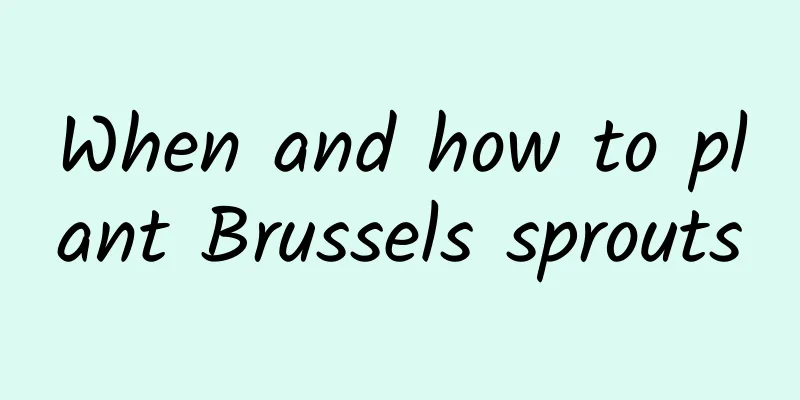Things to note when growing vegetables in greenhouses (what details should be paid attention to when growing vegetables in greenhouses)

Myth 1: If the plant grows vigorously, it will grow wellMany friends think that a vigorous plant is a good thing. In fact, with more water and more leaves, the roots are relatively shallow, the nutrition is not comprehensive, and the yield is reduced. Correct approach:When the vegetables are small, the root depth of weak plants should be controlled, and the amount of water and the root growth rate should be controlled. Myth 2 : More fertilizer, more yieldMany greenhouse growers will apply a lot of fertilizer to the vegetable fields in order to achieve high yields. However, excessive fertilization can easily lead to fertilizer damage. Correct approach:1. For greenhouses that have been growing vegetables for more than 3 years, the amount of cow dung and chicken dung per acre should be controlled at about 2,500 kilograms and not more than 2,500 kilograms, and the use of chemical fertilizers should be reduced to about 50%. 2. If the salt concentration in the land is high, be sure to spread some cow dung, EM fertilizer and humic acid fertilizer. This can increase the carbon-nitrogen ratio of the soil. The soil should be loose and breathable to solve the problem of salt and fertilizer damage. 3. Supplement magnesium fertilizer, zinc and boron to balance the nutrition of the soil, reduce input and create favorable conditions for our continued high yield. Myth 3 : More seedlings, more yieldMany farmers like to keep more seedlings, thinking that this will increase the yield. In fact, because the temperature is relatively low in winter, the sunlight is relatively weak, photosynthesis is poor, and carbohydrate synthesis is even less, it will not increase the yield. Correct approach:Vegetables that overwinter should be planted more sparsely; make full use of space and plant them denser in the early stage, adjust the plant spacing in the middle, and adjust the branch management methods in the later stage to ensure that the leaves are not too crowded. Myth 4: The more you apply pesticides, the fewer pests and diseases you will have.Many friends apply pesticides every 2-3 days during the growth period of vegetables, thinking that more frequent application of pesticides can prevent the occurrence of diseases and pests. WorkaroundBe sure to spray the pesticide according to the symptoms. We generally choose zinc and copper containing agents, which can kill bacteria, enhance the ability of vegetables to resist the invasion of diseases and pests, and promote plant growth. Secondly, we can improve the ecological environment in the greenhouse. If the ventilation is poor and the branches and leaves are lush, spraying pesticides every day may not have any effect. We should thin out the leaves to lower the temperature. Myth 5: Planting more crops is more cost-effectiveSome farmer friends think that since we have invested in building a greenhouse, we cannot leave it idle, so the more crops we plant, the worse the results will be and the lower the benefits will be. The right approachIt is best to plant one crop a year, and it can be planted twice a year, once in spring and once in autumn. For example, eggplant, pepper, tomato and cucumber can be harvested again after the old plants regenerate. When the price of vegetables is low, we can pull up the seedlings and dry them in the ground. You can take some time in the summer every year to deep plow the soil, let the rain press out the salt, kill the bacteria with exposure to the sun, mature the soil, and kill insects in the greenhouse. Myth 6 : High temperature, fast growthVegetables grown in greenhouses have an upper limit on the temperature they need, and the temperature in greenhouses is generally between 25 and 32 degrees Celsius. If the temperature is too high, the respiration of the seedlings will increase, the physiological activities and body operation will be disordered, the vegetables will grow too long, and their nutrition and reproductive growth will not be balanced. Therefore, the yield will definitely decrease. The right approachSet up two vents in the greenhouse, about two or three will do, and lower the temperature in time. Manage the temperature and humidity required by the growth period of vegetables, so as to prevent high temperature from growing vines but not fruits. |
<<: When is the best time to plant onions (how to plant onions for high yield)
>>: How to manage celery for high yield (planting density and yield of open-field celery)
Recommend
When is the best time to harvest soybeans?
Soybean harvest time Soybeans are planted at diff...
When is the best time to transplant the elm tree?
In the autumn and winter of each year, a large nu...
Difference Between Muskmelon and Cantaloupe
1. Fruit Difference The fruit of cantaloupe has f...
Is the rubber tree afraid of cold?
1. Is the rubber tree afraid of cold? This type o...
Where do pineapple seeds come from?
Where do pineapple seeds come from? The reason wh...
How to grow the moonflower so that it will bloom out of the pot?
As the hybrid offspring of the moon, the moon is ...
How to grow small-leaf begonia to make it bloom
Flowering time of Begonia The small-leaf begonia ...
How much is a rose tree?
1. The price of rose trees The price of rose tree...
Should the rose buds be cut off in winter (should the rose buds be cut off in early winter if they cannot open)
Does the rose still need pruning when it is still...
How to make Monstera deliciosa grow out of its pot and grow big and thick
1. Soil foundation If you want Monstera to grow o...
What are the characteristics of plum blossoms? Pictures of plum blossoms
1. Morphological characteristics 1. Flowers: Plum...
How to propagate spiderwort by cuttings
1. Plant introduction Net-grass is native to Amer...
What to do if the potted green radish is too dense? How to prune and divide the pots
1. What to do if it is too dense Pothos is very e...
Why is the dragon blood tree shedding its leaves?
1. Increase lighting 1. Reason: Insufficient ligh...
When and how to plant beans
Planting time for beans Green beans are usually p...









